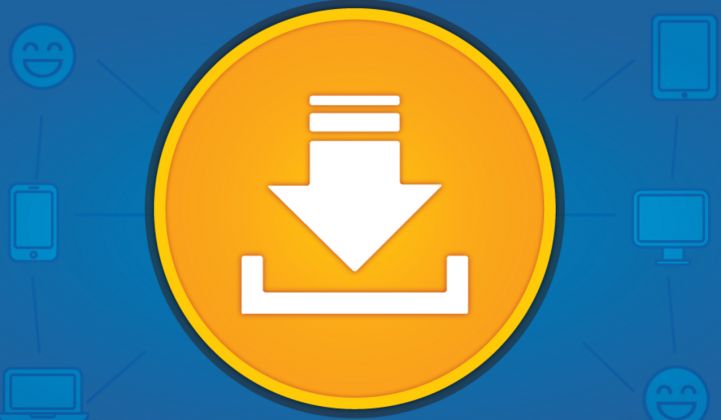The Department of Energy’s SunShot initiative, launched in 2012 to achieve solar PV costs of $1 per watt, doesn't just concentrate on driving down costs of solar panels and other hardware. Nearly two-thirds of the cost of solar projects come from “soft costs,” such as customer acquisition, permitting and labor.
And then there’s the underappreciated cost of managing the financial risk of solar projects, a process that relies on data. Unfortunately for the solar industry, the data involved in this process doesn’t come in any kind of standardized format, a fact that can add uncertainty, time and cost to every step of this process.
This makes data standardization a worthwhile target of the SunShot initiative. Last month, DOE announced $4 million in grants to develop data interoperability, in the form of the Orange Button initiative. Named after other government-led data standardization projects, like the Blue Button for medical data, and the Green Button for utility and customer energy data, Orange Button aims to bring order to a chaotic and opaque body of solar project data.
“If you’re an investor and you want to increase your allocation to renewable energy, you need to work with your financial institution” to collect the data to justify that investment, said Aaron Smallwood, director of technology operations at the Smart Grid Interoperability Panel (SGIP). “You need to know how the asset is going to perform, how it’s going to look on the balance sheet, what the risk premium is you need to attach to it.”
"There’s no standard way right now for this data to be exchanged,” he said. That’s a problem for solar developers and the real estate and financial partners involved in bringing projects together and the owners and operators of the assets once they’re up and running, he said.
It’s also a problem for the utilities and grid operators on the other side of the interconnection of solar projects -- an issue Smallwood is familiar with from his years directing IT and financial services for Texas grid operator ERCOT prior to joining SGIP last year.
This industry group, which has been managing grid and utility data standardization efforts for years, is taking on the first phase of the Orange Button project with its $615,000 Orange Button grant. This will involve bringing together the various companies, researchers and government parties to decide just what data is critical for standardization, as well as how to go about setting the standards for doing so.
The first step in this 24-month process will come on Thursday, with a public webinar for parties involved in the Orange Button initiative's five working groups: deployment, financial, real estate, solar O&M, and grid integration.
“I’m very interested to get into these working groups and work with the financial community,” Smallwood said. “They all use different data sets now. My suspicion is that it’s being done differently, and that each investor and its advisers have their own methods,” from the most basic spreadsheets to more sophisticated XML-based systems.
The second phase will be led by the SunSpec Alliance, the trade alliance developing standards for solar PV and energy storage systems. Armed with its $1.6 million grant, SunSpec will develop its open solar data exchange (oSDX) system to meet the Orange Button goals.
Phase 3 will put this preceding work to use in “one of the deliverables of the project, which is a solar data exchange,” he said. The first participant in this phase, data analysis company kWh Analytics, will use its $1 million grant to develop a software tool, dubbed Solar BabelFish, to translate original data formats into data standards built on the Orange Button specifications.
Meanwhile, DOE’s National Renewable Energy Laboratory will use its $400,000 grant to develop tools to convert paper-based solar records to machine readable formats, and establish a marketplace for standardized solar datasets. “Anyone involved in a solar deployment will have this clearinghouse, this place they can go to...swap their data,” Smallwood said.
One of the challenges involved in opening solar project lifecycle data is walking the line between sharing enough information to make the exchange mutually useful, while protecting confidential and competitive data. As SunSpec notes in its oDSX overview, “Commercial enterprises guard information zealously but are willing to disclose and share it with trusted business partners to achieve operational efficiency and financial gain.”
Smallwood agreed that “the hard work, and the meat of the project, is getting the requirements out of all these industry players, and getting them to participate, and building that into good data requirements.” It’s not yet clear how industry participants will determine which aspects of their data should be open, he noted. “We’re going to find out as we go through this process.”



